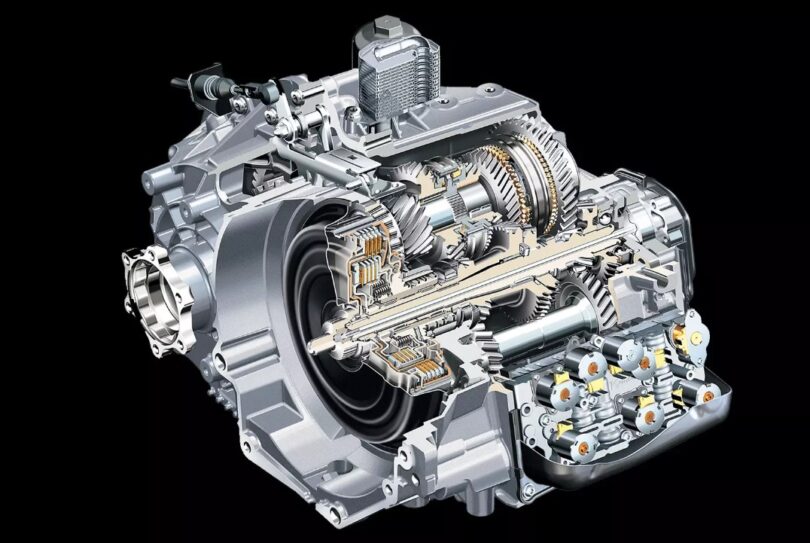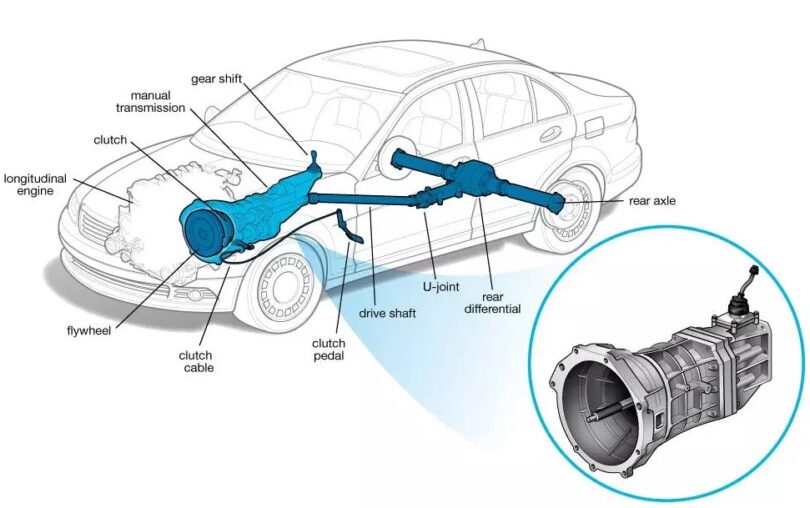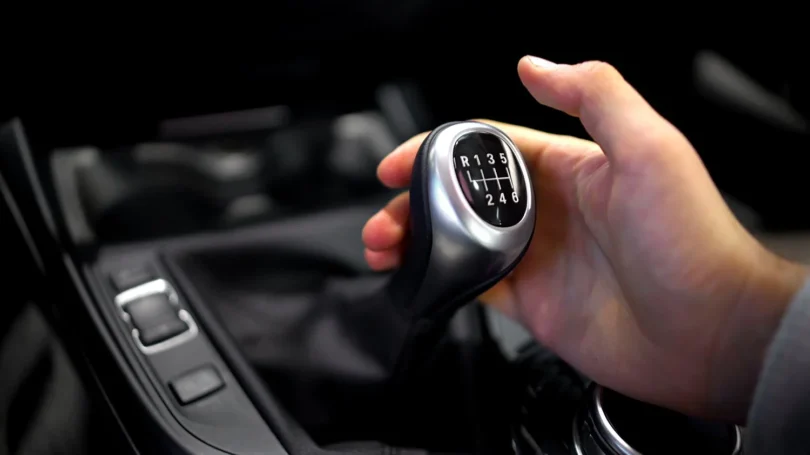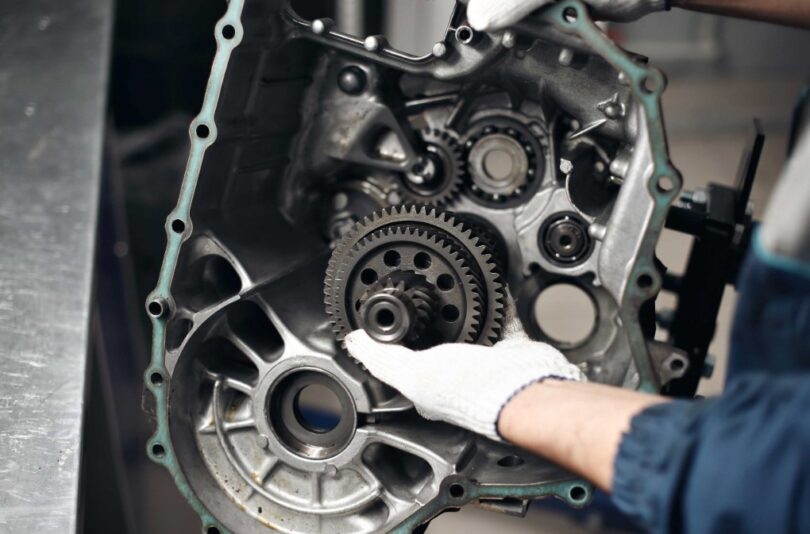 |
Think about how smooth and easy it feels to drive your car. Whether you’re speeding up to join the highway or just cruising through town, a lot of this smoothness comes from a part of your car called the transmission. The car transmission is like a power manager for your car, ensuring the right amount of power goes to your wheels so you can drive at different speeds without any trouble.
You need the right know-how to keep the transmission working smoothly, which is where car manuals come in. These manuals contain everything you need to know about your transmissions and how to take care of them. Whether you’re a newbie or you’ve been around cars for a while, understanding car transmissions can make a big difference in how your car drives and lasts.
This article will make everything about car transmissions easy to understand. We’ll talk about the different kinds, how they work, and why they’re so important for your car to run smoothly. We’ll also touch on how to take good care of them with the help of car manuals. These manuals are your go-to guides for everything your car needs, including keeping your transmission in top shape.
So, let’s get started and learn all about the magic behind how our cars move.
Understanding Car Transmissions
Understanding how your car’s transmission works might sound complicated, but it’s really about how your car switches gears. Think of it as the brain that tells your car how fast to go, using the power from the engine. This process is crucial for matching your desired speed to the engine’s capability.
There are two main heroes in the story of transmission operation: the gearbox and the clutch (in manual cars) or the torque converter (in automatic cars). The gearbox is like a box of gears that can make the car go faster or slower, while still keeping the engine happy and not overworked.
To really get the hang of your car’s transmission and how it does its magic, diving into the vehicle owner’s manual can be a game-changer. This manual contains information explaining all your car’s bits and pieces, especially its transmission. It tells you how your specific car’s gearbox works, when to check the transmission fluid, and how to notice if something’s not right.
In simple terms, the transmission uses the engine’s power to spin your car’s wheels. It needs to change gears—like on a bicycle—to ensure the engine can run without straining, whether speeding up on a freeway or just starting from a stop. Understanding this can help you drive more smoothly and keep your car in good shape for longer.
Manual Transmissions ─ The Basics

Source: cars.com
When it comes to driving, a manual transmission offers a unique experience that puts you in direct control of your car’s engine. With this transmission type, you’re the one making the car shift gears, using a clutch pedal and a gear stick. This setup might seem a bit old-school in the age of automatics, but it offers a level of engagement and efficiency many drivers love.
The manual transmission consists of several key components: the clutch, the gearbox, and the shifter. The clutch allows the transition between gears by engaging or disengaging the engine’s power to the transmission. The gearbox houses the gears that determine how much power gets to your wheels, affecting how fast or slow you go. The shifter, that stick you’re moving, is your direct line to controlling which gear you’re in.
At its core, a manual transmission works through a simple yet elegant mechanism. When you press down on the clutch pedal, you’re essentially disconnecting the engine from the transmission to change gears. Then, by selecting a gear using the stick shift, you’re preparing the car to move at a new speed. Releasing the clutch gently while pressing the accelerator will engage the new gear, and off you go.
Indeed, driving a car with a manual transmission requires a bit of practice, especially mastering the skill of smoothly synchronizing the clutch and the gas pedal. But once you get the hang of it, it can make driving more interactive and fun. You have more control over how your car accelerates and uses fuel, often leading to better fuel efficiency compared to automatic transmissions.
Automatic Transmissions ─ The Inner Workings

Source: auto.economictimes.indiatimes.com
Unlike its manual counterpart, an automatic transmission takes the task of shifting gears off your hands, making driving smoother and simpler. It’s perfect for those who prefer focusing on the road ahead rather than worrying about which gear they’re in.
The magic of an automatic transmission lies in its ability to automatically change the car’s gears, based on the vehicle’s speed and engine load. This process ensures optimal performance without any input from the driver, apart from selecting between a few basic modes like Drive, Park, or Reverse.
At the heart of this system is a complex dance of hydraulic fluid, moving through the power transmission the gear shifts. The main actors in this performance include the torque converter, planetary gear sets, and a variety of sensors that monitor your car’s behavior.
The torque converter connects the engine to the transmission, replacing the clutch in a manual system, and provides the right amount of power needed for each gear shift. Planetary gear sets, a series of gears that can produce different gear ratios, adjust the output speed and torque of the transmission.
Understanding the intricacies of an automatic transmission can seem daunting at first, but it’s essentially about ensuring that your car can move efficiently and smoothly at any speed. The system is designed to optimize fuel consumption and performance, adapting to your driving style. It intelligently selects the appropriate gear ratio for any situation, whether you’re accelerating onto a freeway or cruising through a quiet neighborhood.
That said, the convenience of an automatic transmission comes with the responsibility of maintenance to keep it running smoothly. Regular checks of the transmission fluid, as outlined in your vehicle owner’s manual, are crucial. This fluid keeps everything moving inside the transmission, and keeping it clean and at the right level is key to preventing wear and tear on your car.
Continuously Variable Transmissions (CVTs) ─ A Different Approach
Meanwhile, developed a bit more recently is the Continuously Variable Transmission (CVT). This transmission type offers a seamless, stepless path through its entire range of speeds. There are no abrupt gear changes; instead, the CVT adjusts continuously, making it feel like the car is gliding along the road.
CVT lies in its simplicity and the innovative use of belts and pulleys instead of traditional gears. These pulleys can change their diameter, with one connected to the engine and the other to the wheels. As you accelerate, the pulleys adjust to maintain the engine’s optimal performance level, constantly fine-tuning to deliver the best balance of power and fuel efficiency.
Such a different approach to transmission design offers several advantages. For drivers, the CVT provides a smoother ride without the jolt of shifting gears. It also tends to get better gas mileage, especially in city driving, where stop-and-go traffic often leads to inefficient gear use in traditional transmissions.
However, CVTs are not without their critics, some of whom miss the feeling of gear shifts or have concerns about the durability and repair costs of CVTs.
Shifting Techniques for Manual Transmissions

Source: thezebra.com
With a manual transmission, proper shifting techniques can make a significant difference in how smoothly your car operates, contributing to a more enjoyable ride and longer-lasting transmission.
The basic premise of shifting techniques involves the coordinated dance between the clutch pedal and the gear lever. For beginners, the golden rule is to press the clutch pedal down completely before changing gears to avoid grinding. However, as you become more comfortable with your vehicle, you can explore more advanced shifting techniques that can improve your car’s responsiveness and efficiency.
One such technique is rev-matching, which involves adjusting the engine speed to match the gear you’re shifting into. When downshifting, this means giving the accelerator a slight tap while the clutch is engaged to raise the engine RPMs. This results in a smoother transition between gears and reduces wear on the transmission. It’s particularly useful when decelerating or preparing for a corner.
Another advanced technique is heel-toe downshifting. This involves using your right foot to press both the brake and the accelerator simultaneously (the heel on the brake and the toe on the gas) while using your left foot to press the clutch. This allows you to downshift without losing braking power, keeping the engine in the optimal rev range. It’s a technique favored by performance drivers for its ability to maintain speed and stability when approaching a turn.
Note that the key to effective shifting techniques lies in practice and familiarity with your vehicle. And, of course, consulting your vehicle owner’s manual can provide additional insights into the best practices for your specific car. Embrace the learning curve, and soon you’ll be shifting gears like a pro.
Understanding Automatic Transmission Behavior
Gear ratios in an automatic transmission are preset by the manufacturer to provide the optimal balance between power and fuel efficiency. Unlike manual transmissions, where the driver selects the gear, an automatic transmission adjusts the gear ratios automatically based on your vehicle’s speed, throttle position, and engine load. This ensures the engine remains within its most efficient RPM range, whether you’re cruising on the highway or navigating city traffic.
Understanding gear ratios is key to appreciating how automatic transmissions adapt to your driving. These ratios dictate how many revolutions the engine makes to turn the wheels once. Lower gear ratios (found in lower gears) provide more power for acceleration and climbing hills, while higher ratios (in higher gears) offer better fuel efficiency and smoother rides at high speeds.
What’s great about the automatic transmission behavior is its ability to learn and adapt to your driving style. Modern transmissions can adjust shift patterns to become more efficient or responsive based on how you drive. If you tend to accelerate quickly, for example, the transmission might hold onto lower gears longer to provide more power. Conversely, if you’re a more conservative driver, it might shift to higher gears sooner to save on fuel.
Maintenance Tips for Transmissions

Source: angelstransmissions.com
We’ve mentioned it before, but we can’t stress this enough. Regular transmission maintenance is crucial for preventing costly repairs down the line. Here are some essential tips to ensure your transmission keeps running smoothly.
First and foremost, regular checks and changes of your transmission fluid are crucial. This fluid keeps the transmission’s internal parts cool and lubricated, preventing the wear and tear that can lead to significant issues. Refer to your vehicle owner’s manual for the recommended schedule and type of fluid. A fluid that’s too dirty can lead to poor performance and fuel economy, while a leak could spell serious trouble for your transmission.
Listening to your car can also help in transmission troubleshooting. If you notice unusual noises, such as grinding or whining when shifting gears, or if the car seems hesitant to move or shifts gears unexpectedly, it’s time to consult a professional. These signs can indicate a range of issues, from minor adjustments to the need for more serious transmission repair.
For those with a manual transmission, paying attention to the clutch can save you from future headaches. A slipping or sticking clutch not only affects your driving experience but can also be a sign of transmission problems. Regular inspection and adjustment can prevent further damage.
Finally, practicing good driving habits can significantly extend the life of your transmission. This includes avoiding excessive revving before shifting gears, not using your car to tow heavy loads beyond its capacity, and ensuring you come to a complete stop before shifting from reverse to drive and vice versa.
Driving Tips for Improved Transmission Performance

Source: topdriver.com
Ensuring your car’s transmission runs smoothly isn’t just about regular maintenance; how you drive can significantly impact its performance and longevity. Here are some practical driving tips to help you get the most out of your transmission, whether it’s manual or automatic, and keep it in prime condition for years to come.
One of the simplest yet most effective driving tips for preserving your transmission is to avoid excessive strain. This means not overloading your vehicle or towing weight beyond its capacity. Heavy loads can put undue stress on your transmission, leading to overheating and increased wear.
For those driving automatics, another tip is to let your car come to a complete stop before shifting from reverse to drive or vice versa. Shifting gears while the car is moving can cause unnecessary stress on the transmission, leading to potential damage over time. Manual transmission drivers can also protect their gearbox by ensuring they fully engage the clutch before shifting and by not using the gear stick as a handrest.
Another valuable driving tip is to use your car’s parking brake, especially when parked on an incline. Relying solely on the transmission’s park gear can put unnecessary stress on it. The parking brake helps bear the load, keeping your transmission from bearing all the weight of the car.
Lastly, staying attuned to your car’s performance and addressing any unusual behaviors promptly can prevent minor issues from escalating into major repairs. If you notice hesitation, slipping, or rough shifting, consult a professional to check your transmission.
Following these driving tips can lead to improved transmission performance, extending the life of this crucial component and ensuring a smoother, more reliable drive. It’s all about treating your car with care and attention, which pays off in the long run with fewer repairs and better performance.
Last Words
And there you have it; now you know all the basics of car transmissions. The transmission is the backbone of your car’s movement, playing a pivotal role in turning engine power into motion. So by learning how to use and maintain it properly, you’re protecting your vehicle from premature wear and potentially costly repairs down the road.
After all, a well-maintained transmission means a happier, healthier car ready to take you wherever you need to go.




